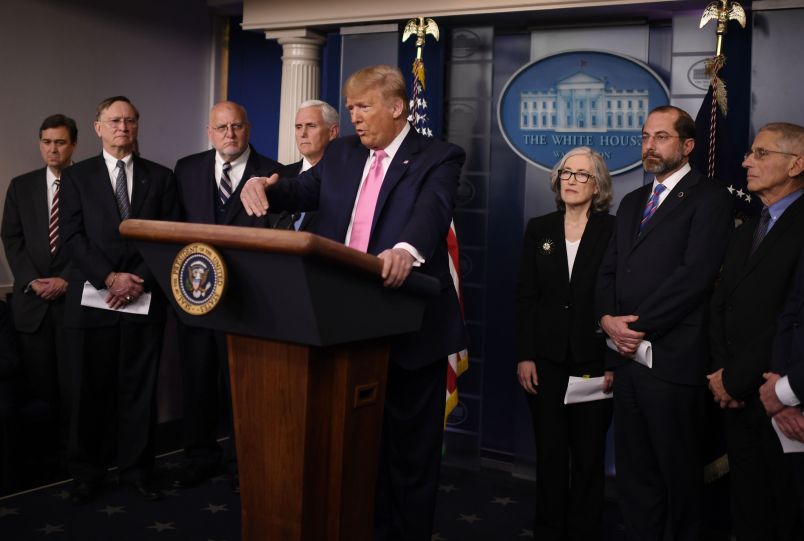With the parade of dates for when the Trump administration anticipates seeing a COVID-19 vaccine (October 2020, November 2020, or by the end of this year, or by January 2021, or later in 2021), you can be forgiven for experiencing some confusion.
It may help to take a look at the hard numbers, and at the projections that officials with Operation Warp Speed have put forth on what a timeline for the vaccine may be.
First, the hard numbers.
Of the three vaccines currently in phase III trials, Moderna started earliest, with development of its vaccine beginning in mid-January 2020, according to the company. So let’s use that date as our starting point.
Operation Warp Speed, the Trump administration’s effort to speed up vaccine development, aims to compress the normal timeframe to create and test a vaccine, which normally takes an average of 73 months.
According to a presentation from the Department of Defense, which I’ve attached below, Operation Warp Speed has squeezed that timeline down to 14 months, partly through increased funding and partly by having certain steps like testing the vaccine itself and verifying the production procedures for the vaccine occur simultaneously, instead of one after the other.
So, where does 14 months leave us? Based on the earliest start date — Moderna’s January 2020 effort — that puts the earliest date for a vaccine in March 2021. If you recall, Dr. Fauci’s initial assessment in March 2020 was that a vaccine was one to one and a half years away at that point.
What’s odd about the above slide, however, is that the 14-month timeline conflicts with the stated mission, on the same slide: to “deliver 300 million doses of safe and effective vaccine by 1 January 2021.”
To achieve that mission according to the stated timeline, development would have had to have begun in November 2019 — when the first case was confirmed, after the virus made the zoonotic leap from bat to man.
It’s not hard to find the same incoherence elsewhere. Take this video that House Minority Leader Kevin McCarthy released on Wednesday.
For all its many faults, the ad accurately states that Operation Warp Speed wants the following result: “a process that typically takes 8–10 years is now likely to take 12–18 months.”
But, even then, the most optimistic timeline would leave a vaccine approved in January 2021.
All that, though, falls short of what President Trump wants.
“Sooner than the end of the year, could be much sooner,” he told Geraldo Rivera last month, adding that he would like to see a vaccine “right around” Election Day.
Or, as CDC Director Dr. Robert Redfield put it in a letter to the states last week, they should make sure that all their vaccine distribution facilities are “fully operational by November 1, 2020.”



